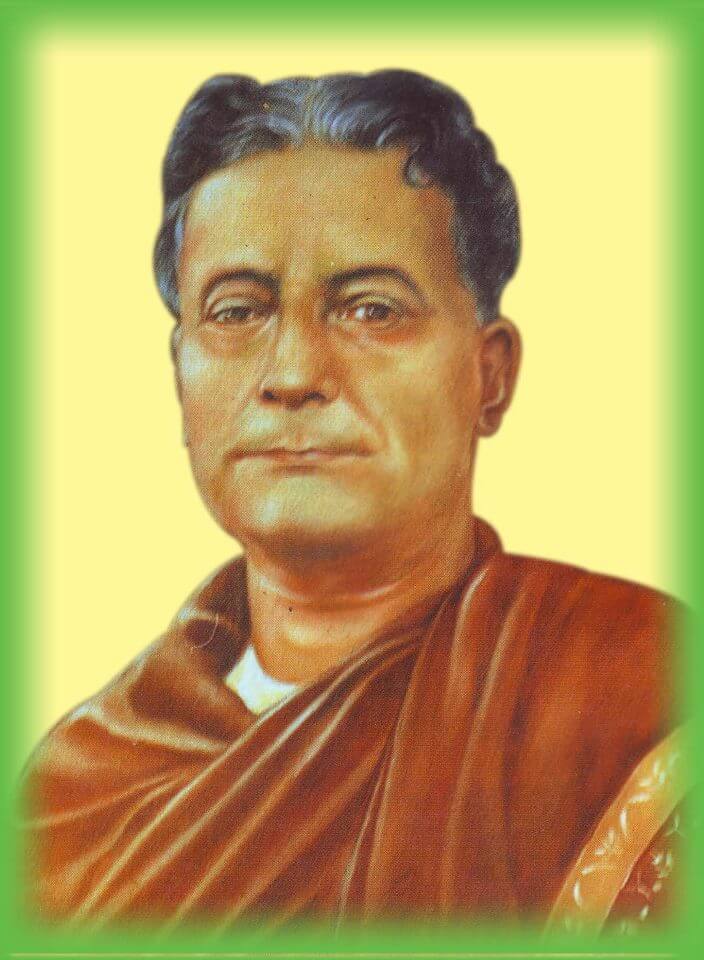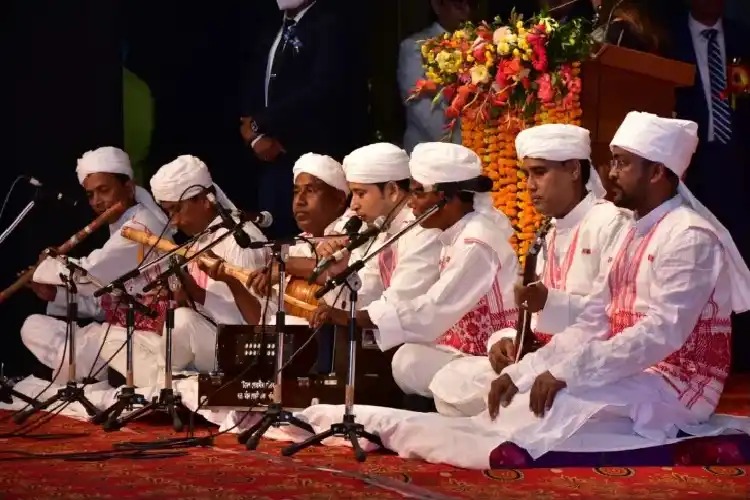Table of Contents
Introduction to “O Mur Apunar Desh”
“O Mur Apunar Desh” is more than just a song; it’s an emotional expression of love, pride, and attachment to Assam. Written by the renowned Assamese poet Lakshminath Bezbarua and composed by Kamala Prasad Agarwala, this anthem resonates deeply with the people of Assam.

Why It Matters
Cultural Identity:
- The anthem encapsulates the essence of Assamese identity, celebrating the land, its people, and their shared heritage.
- When sung, it evokes a sense of belonging and nostalgia, connecting Assamese individuals across generations.
Historical Context:
- “O Mur Apunar Desh” was first published in 1909 in the Assamese magazine “Bahi”.
- Its adoption as the state song during the Assam Student Conference in 1927 solidified its place in Assam’s cultural landscape.
Emotional Resonance:
- The lyrics describe Assam as abundant, melodious, and cherished.
- The longing to see Assam’s face again reflects the deep emotional bond between the land and its people.
Origins and Composition
Early Publication (1909)
The anthem “O Mur Apunar Desh” made its debut in 1909 when it was published in an Assamese magazine called “Bahi” (which translates to “flute”). This initial publication holds immense significance for Assamese heritage and culture. Here’s why:
Preserving Assamese Heritage:
- The anthem’s appearance in “Bahi” marked its entry into the literary and cultural landscape of Assam.
- By being published in a widely read magazine, it gained visibility and recognition among the Assamese community.
Cultural Impact:
- “Bahi” served as a platform for promoting Assamese literature, poetry, and music.
- The inclusion of “O Mur Apunar Desh” contributed to the preservation and dissemination of Assamese artistic expressions.
Adoption as the State Song (1927)
The journey of “O Mur Apunar Desh” from poetic creation to becoming Assam’s cherished state anthem is a tale of emotional resonance and cultural significance:
Assam Student Conference:
- In 1927, during the Assam Student Conference held in Tezpur, the anthem gained official recognition.
- The conference served as a platform for young intellectuals, students, and cultural enthusiasts to discuss Assamese identity, heritage, and aspirations.
Emotional Connection:
- When the anthem was sung at the conference, it struck a chord with the attendees.
- Its lyrical beauty, combined with the heartfelt emotions it evoked, left a lasting impression.
- Attendees felt a deep connection to Assam’s land, culture, and history through this soul-stirring composition.
Symbol of Unity:
- The anthem became a unifying force, transcending individual differences.
- It symbolized the collective love and pride that the Assamese people held for their homeland.
Lyrics and Meaning
Assamese Version:
The original Assamese lyrics of the anthem are as follows:
অ' মোৰ আপোনাৰ দেশ
অ' মোৰ চিকুণী দেশ
এনেখন শুৱলা, এনেখন সুফলা
এনেখন মৰমৰ দেশ।Translation:
Here’s a poetic translation of the lyrics:
O my endearing country
O my speckless country
So euphonious, so bounteous
So near and dear a country.Interpretation:
Love and Pride:
- The anthem expresses deep love and pride for Assam.
- The land is described as abundant, melodious, and cherished.
- It evokes a sense of attachment and longing.
Emotional Resonance:
- When sung, the anthem connects Assamese individuals across generations.
- It symbolizes cultural identity and a shared heritage.
- The desire to see Assam’s face again reflects an unquenchable bond.
Musical Aspects
Key and Rhythm
- Key: “O Mur Apunar Desh” is composed in D major. The choice of this key contributes to the anthem’s emotional resonance. D major is often associated with feelings of warmth, optimism, and pride.
- Rhythm: The anthem follows a waltz rhythm, characterized by a 3/4 time signature. This rhythmic pattern gives it a graceful, flowing quality. Imagine people swaying to the music during cultural gatherings or official ceremonies.
How These Musical Elements Contribute to Its Appeal:
- Emotional Connection: The key of D major evokes a sense of nostalgia and attachment to Assam’s land and heritage. It aligns with the anthem’s theme of love for the homeland.
- Ease of Singing: The waltz rhythm makes it accessible for people to sing along. Whether in formal settings or spontaneous gatherings, the anthem’s rhythmic simplicity encourages participation.
Krishna Dulal Barua’s Missing Translation
- Efforts in Translation: Krishna Dulal Barua, a respected figure, undertook the task of translating “O Mur Apunar Desh” into Mising, an indigenous language spoken by the Mising community in Assam.
- Preserving Cultural Diversity: This translation acknowledges the rich linguistic diversity within Assam. By offering an alternative version in Missing, the anthem becomes more inclusive and celebrates Assam’s multicultural fabric.
Legacy and Contemporary Significance
State Symbol
- Official Recognition: “O Mur Apunar Desh” holds the prestigious status of an official state symbol of Assam.
- Legislative Acknowledgment: The Assam Legislative Assembly formally recognized it as the state anthem, emphasizing its cultural and emotional importance.
- Symbolic Representation: As a state symbol, it represents Assam’s identity, heritage, and unity.
Use During Official Ceremonies and Cultural Events
- Government Functions: The anthem is played during official government ceremonies, including the inauguration of public buildings, state functions, and Independence Day celebrations.
- Cultural Festivals: It resonates during cultural festivals like Bihu, Rongali Bihu, and other regional events.
- Educational Institutions: Schools, colleges, and universities often include it in their programs, reinforcing a sense of pride among students.
Emotional Connection
- Anecdotes and Personal Stories:
- The Elderly Grandmother: Imagine an elderly grandmother, her eyes welling up with tears as she hums the anthem. She recalls singing it during her youth, feeling the same love for Assam that she now passes on to her grandchildren.
- The Migrant Worker: A laborer working far from home hears the anthem at an Assamese community gathering. Suddenly, he feels a surge of belonging, a connection to his roots, and a longing for the familiar landscapes of Assam.
- Fostering Belonging and Pride:
- The anthem transcends linguistic, ethnic, and geographical boundaries. Whether sung in the tea gardens of Upper Assam or the riverine plains of Majuli, it unites people.
- It fosters a sense of belonging—a reminder that Assam is not just a geographical entity but a cherished part of their hearts.
- Pride: When Assamese people hear the anthem, they stand a little taller, their hearts swelling with pride for their unique culture and history.
Conclusion
From its humble beginnings to its current revered status, “O Mur Apunar Desh” has woven itself into the fabric of Assamese culture:
Creation and Early Days:
- 1909: The poet Lakshminath Bezbarua penned heartfelt lyrics, capturing the essence of love for Assam.
- Collaboration: Composer Kamala Prasad Agarwala set these words to a waltz rhythm, creating a timeless melody.
Adoption as a State Symbol:
- 1927: During the Assam Student Conference, the anthem was officially recognized.
- It became a symbol of unity, transcending linguistic and ethnic boundaries.
Musical Elements:
- In D major, the anthem evokes nostalgia and pride.
- Its waltz rhythm encourages participation.
Krishna Dulal Barua’s Mising Translation:
- Inclusivity: Krishna Dulal Barua’s translation into Mising celebrates Assam’s linguistic diversity.
- It ensures that the anthem resonates with all Assamese hearts.
In the present day, “O Mur Apunar Desh” continues to evoke emotions, connect generations, and foster a sense of belonging. As Assam’s soulful anthem, it stands as a testament to love for the land and the enduring spirit of its people.
FAQ’s
Q: Who wrote the lyrics for “O Mur Apunar Desh”?
A: The lyrics were penned by the revered Assamese poet Lakshminath Bezbarua in 1909. His poetic expression beautifully captures the love and pride that Assamese people feel for their land.
Q: How did the anthem become an official state symbol?
A: During the Assam Student Conference held in 1927, the anthem was officially adopted as a state symbol. Its themes of unity and cultural identity resonated deeply with the attendees.
Q: What is the musical key of the anthem?
A: The anthem is composed in D major, a key that evokes warmth and optimism. Its melodic simplicity makes it accessible for singing during various occasions.
Q: Has the anthem been translated into other languages?
A: Yes, Krishna Dulal Barua translated it into Mising, an indigenous language of Assam. This effort celebrates the state’s linguistic diversity.












